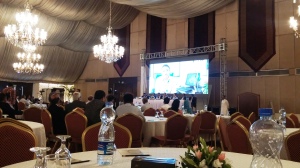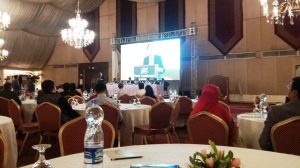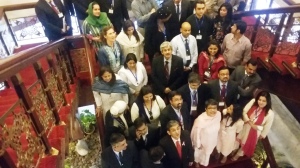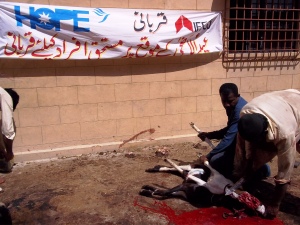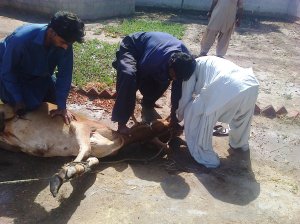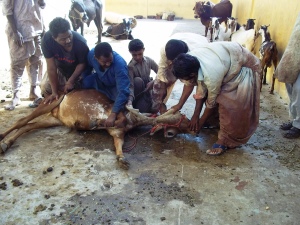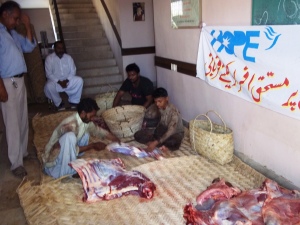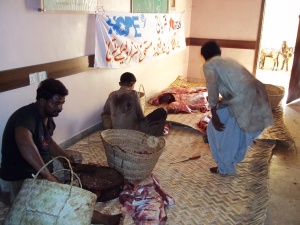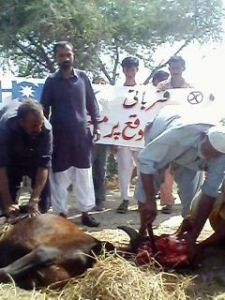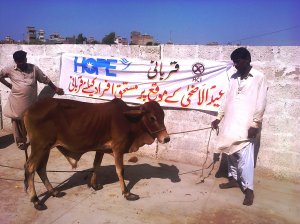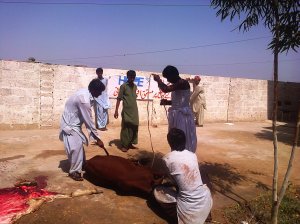Karachi, October 15, 2015 – The Key Findings Report – Multiple Indicator Cluster Survey Sindh 2014, was launched here today in a local hotel. Senior Minister for Planning & Development, Mr. Murad Ali Shah was the Chief Guest. The Additional Chief Secretary (Development) Mr. Ajaz Ali Khan, Representative, UNICEF Pakistan Ms. Angela Kearney, and Director General, Bureau of Statistics Mr. Ali Dino Gahoti also attended the event. The Key Findings Report covering socio economic indicators for Sindh focuses on children and women. It has been put together by the Bureau of Statistics, Planning and Development Department, Government of Sindh. Technical and financial support for the survey was provided by United Nations Children’s Fund (UNICEF). HOPE, a health and education NGO participated actively in the activity.
Sindh MICS 2014 is based on data collected during February to August 2014.More than 19,000 households were covered. Sindh MICS covers 125 socio-economic indicators. Five separate Questionnaires; household, women, children under five, health facility records, and water quality testing, were used for data collection.
Over the course of the day’s dialogue partners, including HOPE, a health and Educational NGO in Pakistan, exchanged insights of the progress made by the bureau of statisticsin Pakistan and
Sindh MICS 2014 noted considerable improvements in health indicators for women and children. Proportion of mothers receiving antenatal care from skilled providers has increased to 80 percent. Also, 28 percentage points improvement has been observed in births assisted by a skilled provider (from 38 percent to 66 percent). Moreover, births taking place in health facilities has also increased significantly from 42 percent in 2006-07 to 64 percent in 2014
Sindh MICS 2014 noted considerable improvements in health indicators for women and children. Proportion of mothers receiving antenatal care from skilled providers has increased to 80 percent. Also, 28 percentage points improvement has been observed in births assisted by a skilled provider (from 38 percent to 66 percent). Moreover, births taking place in health facilities has also increased significantly from 42 percent in 2006-07 to 64 percent in 2014
A significant rise in continued breastfeeding at 1-year is observed from 35% in to 77%.
Overall, 35 percent of children age 12-23 months received all the recommended vaccinations by 12 months of age which reflects an improvement in the last few years. Similarly, an increase has been witnessed in measles vaccine coverage (53 percent).
Birth registration is one of the key indicators of child protection. MICS 2014 shows that 3 in 10 children (29 percent) under age 5 have been registered in contrast to only 20 percent reported in MICS 2003. Survey results show that at least one household member in 9 out of 10 households owns a mobile phone.
The objective of the MICS survey is to collect statistically sound and internationally comparable data essential for developing evidence-based policies and programmes, and for monitoring progress towards global, national and provincial goals. The MICS Survey focuses mainly on those issues that directly affect the lives of children and women. MICS has been a major source of data on the Millennium Development Goals (MDG) indicators and provide baseline for Sustainable Development Goals (SDGs).
Overall, 35 percent of children age 12-23 months received all the recommended vaccinations by 12 months of age which reflects an improvement in the last few years. Similarly, an increase has been witnessed in measles vaccine coverage (53 percent).
Birth registration is one of the key indicators of child protection. MICS 2014 shows that 3 in 10 children (29 percent) under age 5 have been registered in contrast to only 20 percent reported in MICS 2003. Survey results show that at least one household member in 9 out of 10 households owns a mobile phone.
The objective of the MICS survey is to collect statistically sound and internationally comparable data essential for developing evidence-based policies and programmes, and for monitoring progress towards global, national and provincial goals. The MICS Survey focuses mainly on those issues that directly affect the lives of children and women. MICS has been a major source of data on the Millennium Development Goals (MDG) indicators and provide baseline for Sustainable Development Goals (SDGs).
The efforts of HOPE as an NGO and in particular the efforts of its chairperson, Dr MubinaAgboatwalla, child specialist in Karachi were lauded for her pioneering efforts and the immense work she had done both in the field of education and health.
